Tea is the most popular drink in the world. In China, teas are distinguished in different colors: white, green, yellow, red, oolong, and black. The latter includes Pu-erh, one of the most popular varieties. Tea drinking for the inhabitants of the Middle Kingdom is an ancient rite filled with a special meaning. During its execution, everything matters: water, dishes, brewing method and variety. The editorial staff of the website "bestx.htgetrid.com/en/" offers you a review of "The best varieties of Pu-erh tea for 2020", compiled according to the opinion of buyers and experts.
Content
- 1 History of origin
- 2 How tea leaves are processed
- 3 What are the types of tea
- 4 Selection criteria for quality tea
- 5 What else to pay attention to
- 6 About the benefits and harms of Puer
- 7 Top manufacturers
- 8 Where can I buy
- 9 Rating of quality varieties of Puer
History of origin
Since ancient times, it was grown in the vast territory of eastern Tibet, which was first called Bashu. Then the kingdom of Shu arose on these lands. In the Middle Ages, two states were located on this territory: Nanzhao and Dali. Today these lands are occupied by the provinces of Yunnan, Guizhou, Sichuan and some provinces of Laos, Vietnam and Burma.
Tea leaves in these parts are harvested not from shrubs, but from trees; in Yunnan province, there are hundreds of tea trees over 1000 years old. From here they spread throughout the world. These lands were inhabited in ancient times by the people of Pu. Over time, the tea collected here came to be called Puer tea.
How tea leaves are processed
The color range of the brewed tea and the unique taste depend on the processing technology of the tea leaf. It undergoes various degrees of fermentation.
On a note! Fermentation is the process of oxidation, or even fermentation of the leaf mass, during which the raw material is affected by temperature, oxygen, moisture. To speed up the reactions, the mass is constantly stirred.
The procedure can be carried out up to 100% of the end, or interrupted at any time by performing fermentation to a certain percentage, depending on what type of tea is needed at the end.
What are the types of tea
Unfermented or minimal fermentation
In this category, the product is oxidized by 2-10%. The brewed drink is characterized by a light aroma and unobtrusive taste. In this way, it is produced:
- White tea;
- yellow;
- some varieties of green;
- oolong.
The resulting composition can be aromatized, for example, with a jasmine flower.
Medium Fermentation Drink
The fermentation process is stopped when the product “ripens” within the range of 10 to 80%. It is not hard to guess that it is he who can most often be found on our table. The depth and saturation of color and what we call "strength" of tea depend on the percentage of maturity.I mean, the more the tea ripens, the darker and stronger it is. Beverages of this type have their own classification, depending on the degree of leaf fermentation achieved:
- 10 to 20% - first class.
- From 20 to 50% - second class.
- From 50 to 80% - third grade.
Fully Fermented Drinks
Leaves with this degree of maturity are both dried and completely filled with juices. The most famous representatives of this species are red Chinese teas. Infusions can be of various shades, from burgundy to brown. They have a thick and tart taste, rich aroma.
Post-fermented tea
The leaf mass is saturated up to 95 - 100%. It is to this type that Puer belongs. They have healing properties, incredible richness and strength, unforgettable taste and aroma. All the "fault" is the double fermentation to which the raw materials are exposed. The process is quite peculiar. At first, everything happens as with normal fermentation. At the same time, the raw material "ripens" to the condition of green tea. Then the process stops for a while, then resumes. Moreover, the fermentation or aging process can be natural or artificial (accelerated).
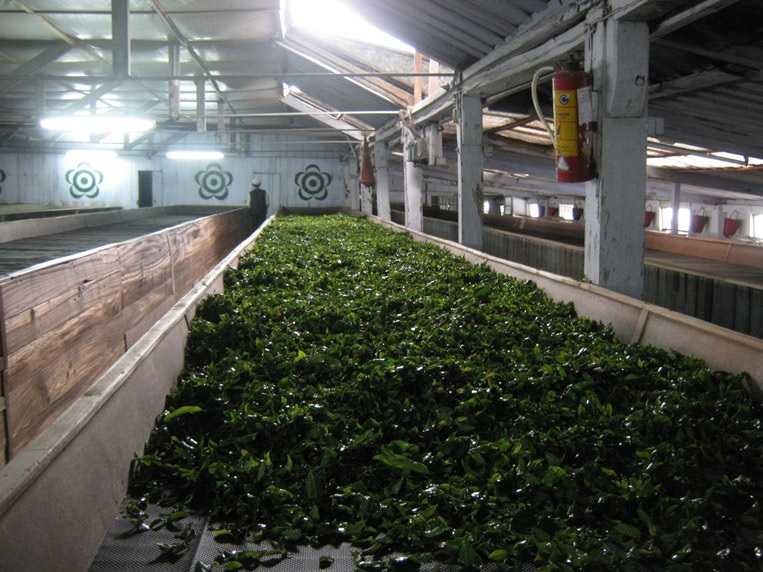
The production technology was developed in the mid-seventies of the last century and is distinguished by ingenious simplicity. Raw materials are stored in a heap and are abundantly moistened. As a result, fermentation occurs with the release of heat, which is why the process is accelerated. The need for accelerated ripening of the product arose in connection with the emergence and development of road transport. While mankind did without cars, the delivery of tea was quite a long business and the fermentation process from beginning to end proceeded along the way. With the advent of modern delivery systems, the travel time was reduced and by the time the goods were unloaded at the recipient's warehouse, the product did not have time to reach the required condition.
Important! Today the consumer knows two types of Puer: Sheng (raw, green), obtained by natural fermentation, and Shu (mature, black), produced by modern technology.
Selection criteria for quality tea
The question is not easy, especially for beginners, mastering this drink. Let's try together to figure out how to choose it and not be disappointed.
Green or black
As mentioned above, two different types of tea are made from the same raw material:
- green tea, known to connoisseurs as Shen;
- black - Shu.
According to the manufacturing technology, both drinks differ so much from each other in taste and aroma that even the evaluation criteria for each have their own.
Choosing Shen
Naturally fermented green leaves. The brewed drink has a pale golden color, with a delicate floral aroma, with notes of nuts and dried fruits, astringency and bitterness. Consider the evaluation criteria.
Assessment of packaging and appearance
Assessment of packaging does not include consideration of the artistic value of the box. We are interested in information about the drink. First of all, you should ask in what month the product was made. The best drink is made from a leaf harvested in spring or early summer. You need to choose a product on the label of which the month of manufacture is indicated in May, the deadline is June. We don’t buy anything that is made in the next summer months or even in the fall. The size of the tea leaf is not decisive, but it must keep a clear shape, the pressed "pancake" is equally dense, voids are unacceptable.
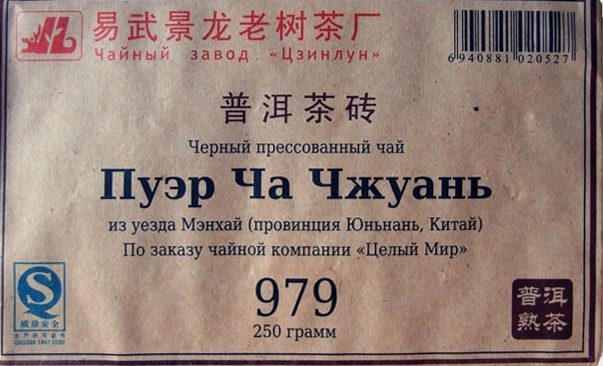
Choosing aroma, taste and color
Let's bring the pressed briquette closer to the nose and inhale its aroma. The smell should be. If not, this Shen is not worth your attention. At the same time, the smell should not be harsh, have extraneous, "not tea" aromas.
The infusion should be transparent, without turbidity and precipitation. The presence of dust and small tea leaves is excluded. The taste of the drink should be pleasant, tart, a little astringent. Slight bitterness is allowed.
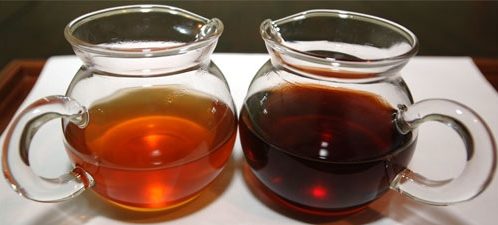
How to choose Shen by age
Let's go back to the production date indicated on the package. Age matters. Indeed, the older the product, the better its taste becomes.Gradually Shen part with the residual greenness, the taste and aroma of the drink become more interesting. Accordingly, the cost of the product increases, and a lot, from 20% to 40% annually. Therefore, the tea purchased this year in 7-8 years may no longer be affordable for you. But there is one caveat!
Important! With age, the taste of only high-quality Sheng Puer, made from selected raw materials, in strict observance of the entire process technology, improves. If a product is bad, it won't get better in two decades.
Better to choose Shen between the ages of 3 and 6. By this time, they have already got rid of a fair share of bitterness and "greenness", and their cost is not yet "off scale".
How to navigate the price
The cost of a product grows in proportion to the growth of all of its above qualities. Good tea cannot be cheap. This is disadvantageous for both the manufacturer and the seller. So if you are offered to pay 1000 rubles for a 10-20 year old Puer pancake, the following options are possible:
- the seller is lying about the age of the product;
- you may be offered low-quality tea;
- you are incredibly lucky and you have a unique opportunity to buy great tea very cheaply.
Do not forget that the Chinese tea market is full of unscrupulous sellers trying to cash in on fairy tales, legends, and exotics. They will try to sell you a cheap product for a lot of money. Therefore, before buying such a difficult product, you should at least briefly familiarize yourself with the price level.
How to choose Shu Puer
This tea is completely different in taste, color and appearance. Even the raw materials for producing Shu are not at all the same from which Shen is prepared. This is a black mass of stuck together leaves, whose outlines are not particularly guessed in the total mass. The drink has a dark ruby, almost black color and its own unique aroma, in which notes of peat, wood, bark and dates are guessed. Let's consider the main criteria.
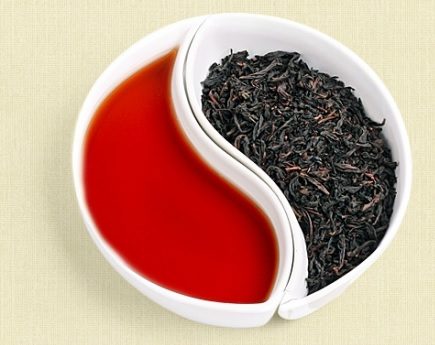
Choosing by appearance
We carefully examine the packaging, where we are only interested in the date of manufacture. After that, we open the packaging and evaluate the product visually. Shu is obtained by full fermentation (accelerated aging or fermentation of the tea leaf), while the starting type of raw material changes significantly. With such a technology for obtaining a finished product, it makes no sense to put high-quality green mass in the "Wet Heaps", but none of the Chinese manufacturers would ever think of it.
As for the appearance, it is enough for a high-quality Shu that the outlines of the tea leaf are guessed in the total mass. Allowed up to 5% of stems and cuttings from the total mass.
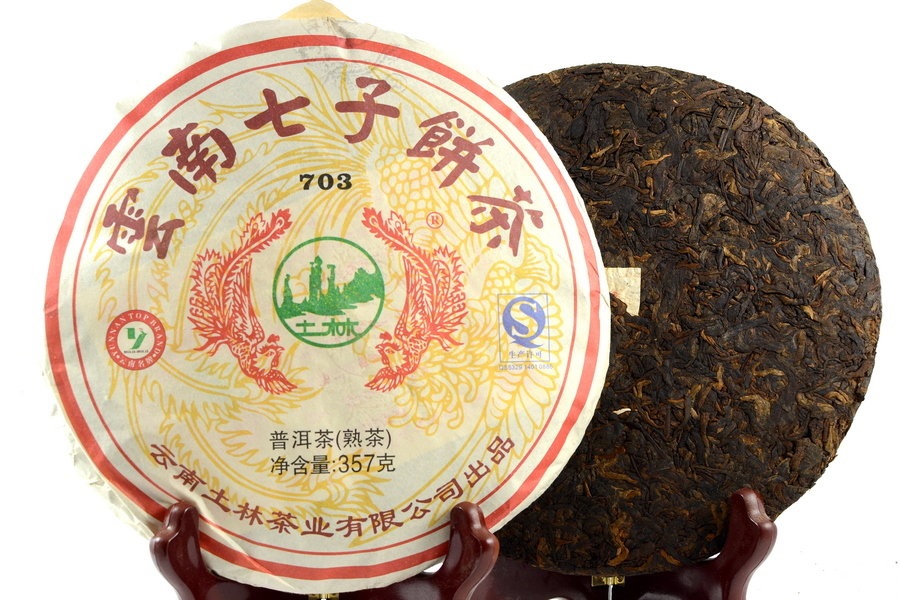
Determination of aromas, taste, color
Everything is as usual. There should be a scent, and it should be pleasant. No harsh odors, moisture, rot. Only woody notes, bark, dates or something pleasant that is noticeable only to you. The brewed hour should be transparent, without turbidity, dust and fine fractions are absent, all aromas, determined by smell, are present in the taste.
Choice by price
Do not chase after cheapness, you will lose. The higher the conditions listed above are different for the drink, the more expensive it will cost to purchase, and rightly so. Otherwise, this is not your drink. Buy tea bags and toss them in boiling water.
What else to pay attention to
Pressed tea can take various forms: pancake, brick, tile ... This does not affect the quality of tea in any way. Weight, that's what changes with shape. And here you should use a simple rule: the heavier the pancake, the better the product. From the point of view of the manufacturer, everything is correct. It makes no sense to press a quality product into miniforms. It is better to do this from the rest of the mass, mixing it with dust and fines. Do not make large pancakes from leftovers and gums.
When purchasing tea in the store, make sure that it does not lie on the shelves next to tobacco, coffee hookahs or flavored drinks. Tea will absorb all the pungent odors, and instead of tea you will bring home coffee or tobacco. In a conversation with the seller, listen carefully to everything that he has to say about his product.If he "loads" you with some kind of esotericism, or starts telling myths and legends, the following options are possible:
- the seller does not know the characteristics of his product;
- trying to sell you a substandard product.
About the benefits and harms of Puer
- Like any tea, it invigorates and warms, tones up and improves mood. This is the benefit. But do not drink it at night looking. You may not fall asleep at all, because it tones.
- Able to remove toxins and rid the body of toxins. Promotes weight loss. Double benefit. But it can cause heartburn.
- Increases pressure. For those suffering from hypotension, it is useful, but it is contraindicated for hypertensive patients.
- It has diuretic properties, which is good. But for those suffering from kidney stones, it is contraindicated, since stones can begin to move.
In other words, before you start to get involved in this tea, you should consult with your doctor.
Top manufacturers
As already mentioned, the best Puers are only made in China. Therefore, talking about the best producers of the most popular Chinese tea in the world, we will name only Chinese factories located in the Yunnan province.
Min Kang
The production is located in Si mao city. The company owns 67 hectares of its own plantations and production capacity for half a million tons of products per year.
Pu Wen
The Yun Ya trademark of the Pu Wen enterprise located in the village of the same name. Owns 65 hectares of tea plantations, cultivated at an altitude of over 1000 meters. The production capacity allows us to produce more than 20,000 tons of product per year.
Wang Xia
Factory and trade mark of the same name from the city of Si mao. The number of the team does not exceed 80 people. Annual production capacity is from 3000 to 6000 tons. The enterprise and the trade mark bear the name of its founder, who began her working career as a worker in the famous Menghai Tea Company and rose to the quality director.
Feng Qing
It is part of the "Dian Hong" association. On the market since 1939. Known for its famous Yunnan red tea, Dian Hong. In 1949, the plant received the exclusive right to supply it abroad. Owns 2000 hectares of tea plantations and four automated lines, providing the output of 10000 tons of products per year. The assortment of 100 types of tea, including:
- pu-erh;
- green;
- jasmine;
- packaged.
Yun He
Produces tea of the brand "Pu yu", pressed in the form of pancakes, bricks, then cha, many loose, up to 1500 tons per year.
Meng Hai County Factory
Belongs to the DAI association. The most famous tea production in China. It was founded in 1940 and received the name "Fo Hai". In 1941, the territory was occupied by Japanese troops and tea production was stopped until 1951. Today there are up to 1220 staff members. The enterprise covers an area of 15 hectares, owns 1400 hectares of its own plantations and warehouses with a capacity of 8000 tons of finished products.
Dou ji
A well-known Chinese company, owns Yi Wu Zheng Shan factory with a production area of 3000 m2. The head office is located in Guangzhou. The company's products have the following differences:
- only old tea trees are the source of raw materials;
- a stone press is used to shape products;
- the product is readily bought in Taiwan, Hong Kong, Korea and Japan.
The company was founded in 2005. A year later, production facilities were launched and the first Dou Ji products went on sale. In the same year, the company's products were awarded the international QS quality certificate.
Zi Yi Trading House
On the market since 1998. It began its activity with the production of teapots, the raw material for which was Yixing clay. Today the company sells tea produced at various factories in the Middle Kingdom.
Hung De
The company has been operating since 2009. Trades tea Shu Dai Tzu and Pu Zhi Wei. Works with various manufacturers, including trades in Da Yi pancakes at Menghai Factory.
The description of the best manufacturers can be continued for a very long time, but we cannot afford such a luxury. Our review has other tasks.Which company is better to buy, you can't tell right away. You have to try to form your own opinion. In any case, those who do not imagine this taste should listen to the advice and recommendations of those who know a lot about this: sellers - consultants of brand stores, collectors and just connoisseurs. It does not hurt to find out how much a particular option costs, so as not to overpay for an ordinary product.
Where can I buy
It is best of all in a specialized store, the product can be viewed, touched and smelled, and in some places and tasted. If this is not possible, it remains to order the product online in the online store.
Rating of quality varieties of Puer
Shen raw (green)
5. Shen Puer Sub-division
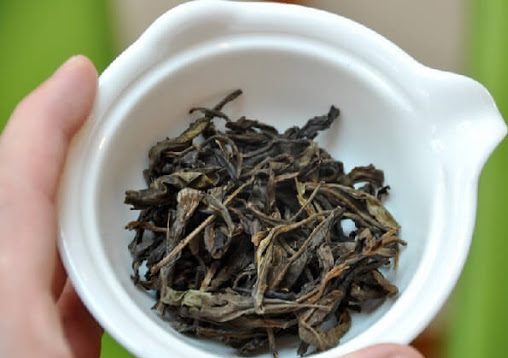
Sheng loose leaf from Yunnan province. It has a mild fruity taste and a long refreshing aftertaste, in which menthol and apricot are guessed. A pleasant to the eye infusion of light honey color, after a few spills it becomes rich gold. The taste is saturated with aromas of prunes and dates. There are pear notes combined with spices. Woody-herbaceous aftertaste. The average cost for 50 grams is 265 rubles.
Advantages:
- wonderful taste;
- memorable aroma;
- long refreshing aftertaste;
- affordable price.
Disadvantages:
- not identified.
4. Shen Puer Da Xue Shan "Mountain of Big Snows"
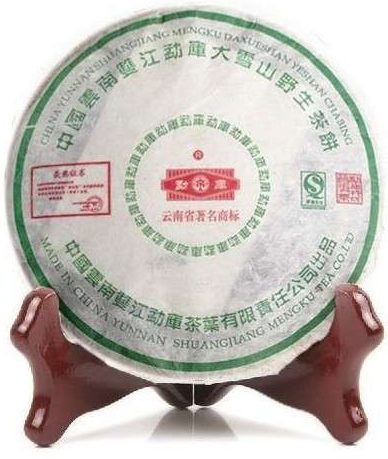
This is the name of the mountainous area in the Menku region, home to the wild tea gardens that brought fame to the area. The places here are untouched, surrounded by thickets of bamboo, that is why natural plantations were discovered not so long ago, in 1997. Shen, made from local raw materials, has a juicy and bright fruit and berry aroma. For brewing, 5 gr. teas are poured with water at a temperature of 85 ° in a clay teapot or gaiwan, with an exposure of 10 to 20 seconds.
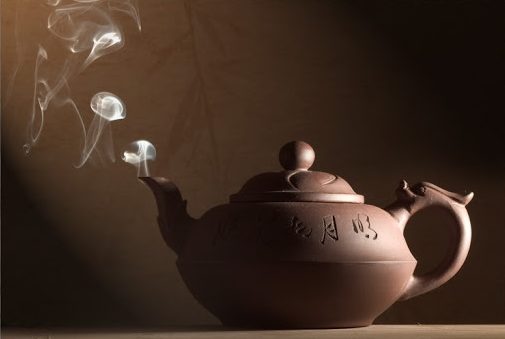
On a note! Gaiwan is a special vessel for brewing tea with a lid and a saucer. The material for manufacturing can be glass or ceramics.
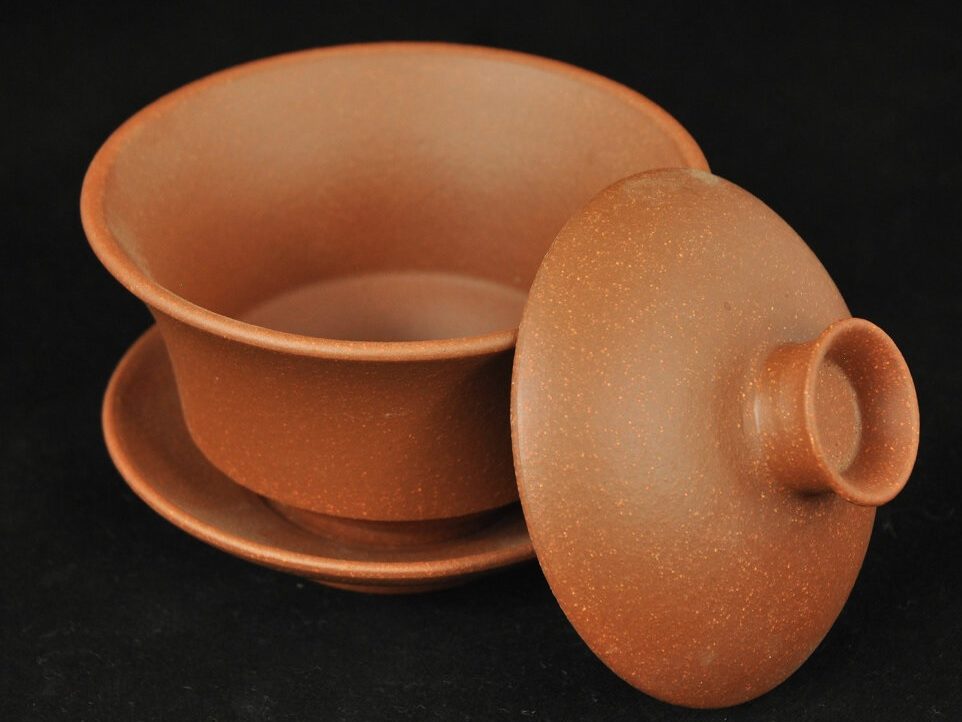
As a result, we get a drink of honey tint with gold. With each spill, the shades become more saturated. Average cost per package is 357 gr. is 1985 rubles.
Advantages:
- gives strength;
- helps relieve fatigue;
- helps to improve mood;
- helps to improve metabolism.
Disadvantages:
- not identified.
3. Shen Puer Yi Wu
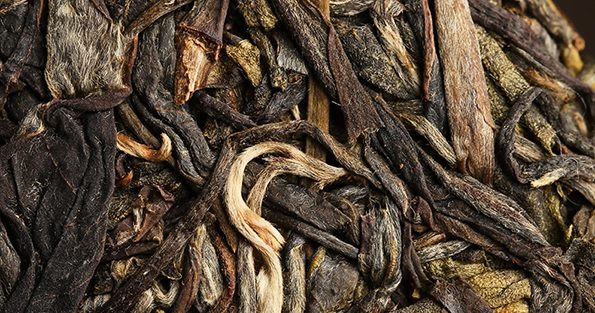
A young and already interesting and popular product, produced by the Kurmin cooperative. The harvest was collected in 2015, after which the raw materials were fermented for two years, gaining flavors and aromas. It is brewed for 20 - 30 seconds. The result is a golden honey infusion with a rich and multifaceted taste, slightly sweet and tart. Average cost per package is 200 gr. will be 1600 rubles.
Advantages:
- helps to normalize blood pressure;
- promotes the activation of brain activity;
- is an additional source of vitamins.
Disadvantages:
- the price bites.
2. Shen Puer To Cha Yinhao
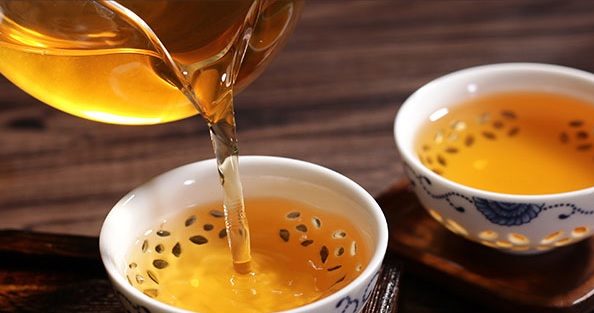
The raw materials for him were given by old trees from mountain plantations in Menghai County. In China, it is said that the quality of tea increases with the height of the tea trees.
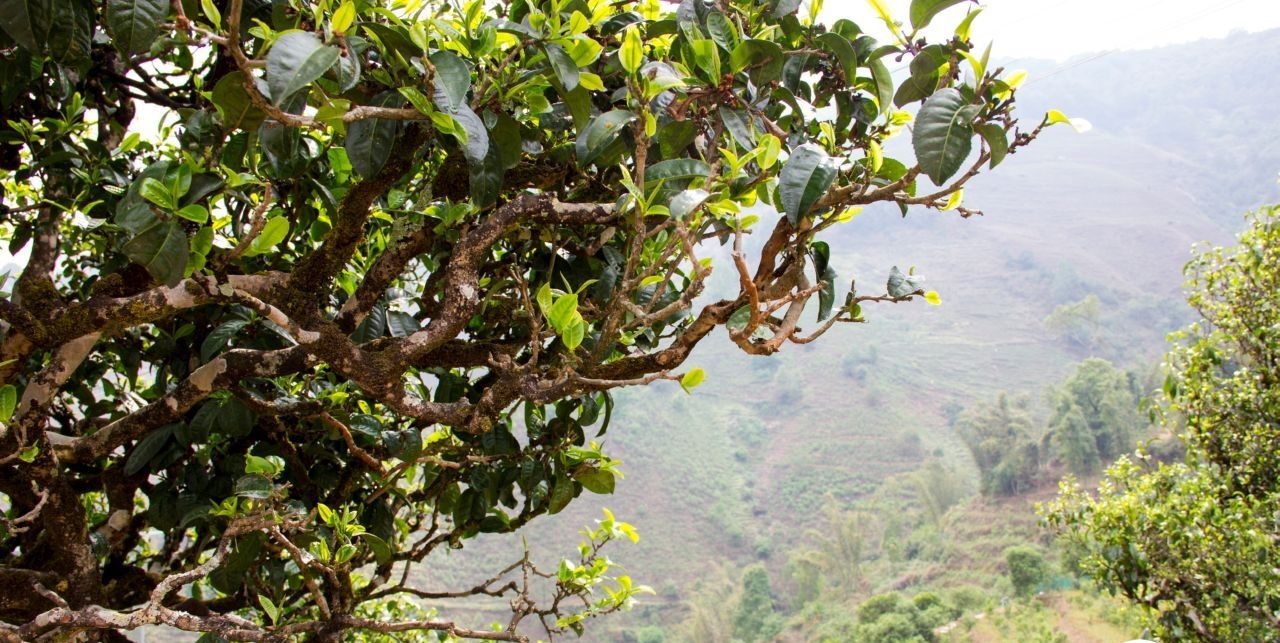
You start to believe in this when you hold tea in your hands, pressed into a small cup. This form is called the to cha (small cup). Brewed in doses of 5 grams. Hot water with a temperature of 95 ° C. The first infusion gives an infusion of a bright golden hue. From strait to strait the infusion is saturated to the color of amber, delighting with a pleasant sweet aftertaste shade, bright floral aroma of walnut and prunes. The average cost of a package is 100 grams. will amount to 1,650 rubles.
Advantages:
- tones up;
- has a calming effect;
- helps digestion;
- improves metabolism.
Disadvantages:
- is not cheap.
1. Shen Puer to cha Sheshen Yingsyan
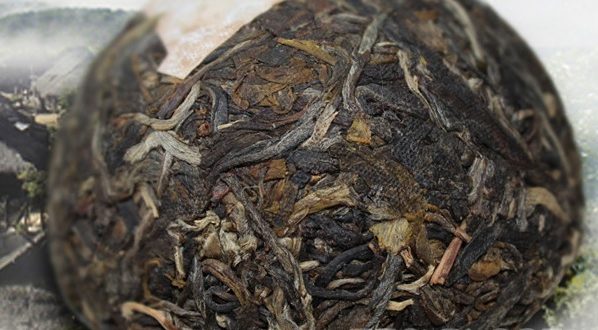
Made of large selected sheets without flaws in appearance. Such scrupulousness in the preparation of raw materials contributes to the creation of a unique drink. It is no coincidence that this variety has received the best customer reviews. Brewed in 5 g portions.in clay teapots or gaiwans, for 15-20 seconds, with a water temperature of 90 ° C. The infusion turns out to be honey-gold in color, which lasts up to 12 spills. Honey is also felt in the aroma of the drink, which is why the aftertaste remains sweet for a long time. The average cost of a package is 100 grams. will amount to 1,650 rubles.
Advantages:
- invigorates;
- restores strength;
- relieves anxiety;
- improves metabolism.
Disadvantages:
- the price is not for everyone.
Review of the best Shu Puers ready (black)
5. Shu Puer Xiao to cha with chrysanthemum
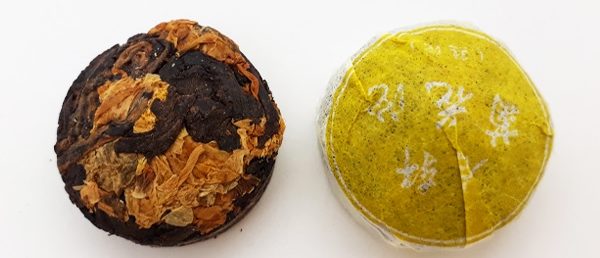
The drink is obtained by accelerated fermentation of tea leaves in wet heaps. The name reveals the shape and dimensions of the pressing of this product (then cha is a small cup). This form of release is much inferior to the size of a traditional pressed pancake, and therefore costs a little less.
Acquaintance with this drink will give you true pleasure. One tea is brewed with hot water at a temperature of 90 to 100 ° C. The first infusion is infused for 15 seconds, the second and third - for 20 seconds, the fourth is infused until ready for 25 seconds, and the fifth and seventh - for 35 seconds, etc. Gradually, the cognac infusion changes color to ruby. The taste has earthy notes that are softened by the scent of chrysanthemums. The average cost of one "small cup" weighing 7 grams will be 25 rubles.
Advantages:
- neutralizes toxins;
- gives vigor;
- normalizes the digestive tract;
- affordable price.
Disadvantages:
- then cha is not pressed from high-quality, intact leaves, use the remains at the bottom of the container.
4 Shu Puer Zhuang cha
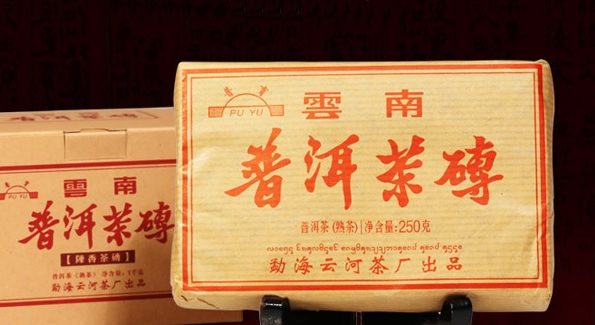
Product of Yun He Company. Pressed in the shape of a brick. The products of this factory are distinguished by their characteristic taste and aroma. This is facilitated by the water from mountain sources used in production and selected raw materials collected from the plantations of the Bulanshan mountains. It is brewed with hot water at a temperature of 90 ° C, in portions of 7 grams. The brewing time on the first infusion is 15 seconds. With each subsequent infusion, the exposure increases by 5 sec. And by the 8th strait it reaches 55 seconds. The color of the infusion is red with amber and burgundy hues. The palate balances between soft and strong with a pleasant aftertaste. The average cost of a package is 250 gr. will be 1540 rubles.
Advantages:
- invigorates;
- warms;
- helps to overcome fatigue;
- facilitates the digestive tract;
- eliminates toxins and toxins.
Disadvantages:
- the price bites.
3 Shu Puer to cha Menghai
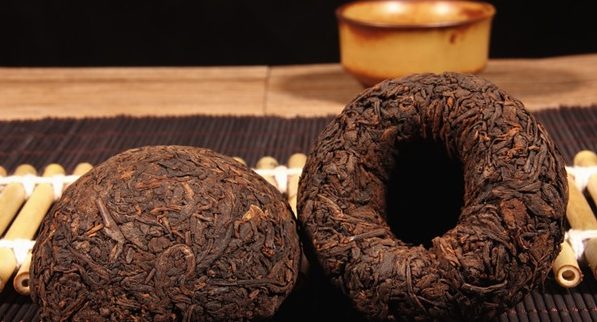
A wonderful drink, worthy of daily use, with an infusion of amber shades. With each spill, it darkens to the color of oil. Intense, tart taste and mild sweetish aftertaste, with fruity aromas in which the presence of prunes is heard. Average price 100 gr. packaging will be 680 rubles.
Advantages:
- tonic;
- warming;
- giving strength.
Disadvantages:
- expensive.
2 Shu Puer Long Zhu "Dragon Pearl"
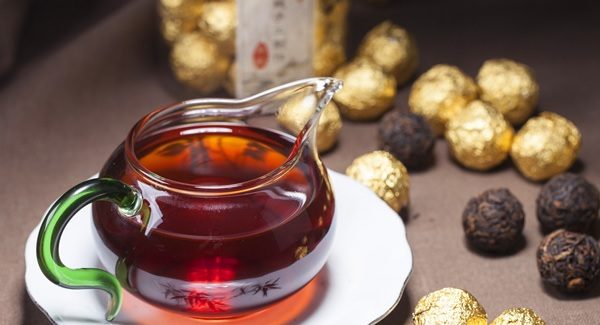
This drink tastes absolutely amazing. It combines chocolate waffles and prunes, fried marshmallows and strong, dense tones of real Shu. The cognac-colored infusion has amber shades. Pressed into balls, weighing 10 grams. The average cost of one is 105 rubles.
Advantages:
- neutralizes toxins;
- invigorates;
- "Adjusts" the work of the digestive tract.
Disadvantages:
- the price is not for everyone.
1 Shu Puer Jin Dian
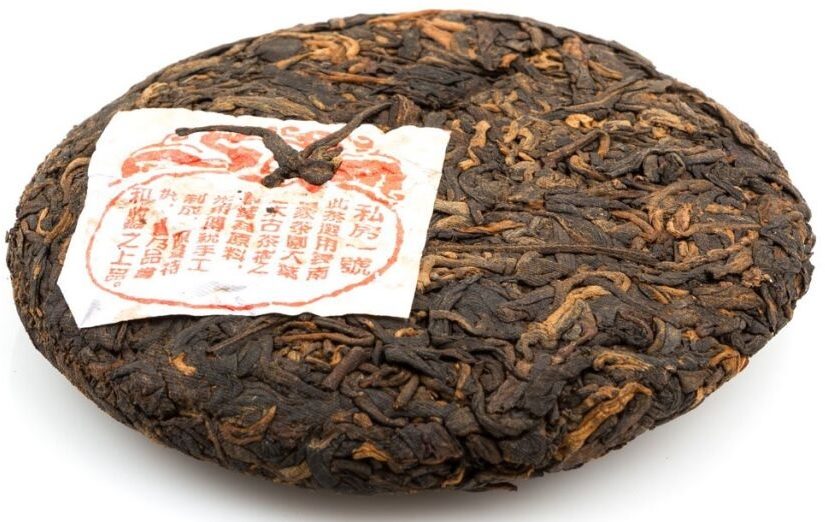
This unique Shu gets the best reviews. The manufacturer guarantees everyday pleasure for those who prefer it to all other types. The colors of the infusion vary from amber to brown with a burgundy tint. The palate is dense and rich, with notes of wood and fruit. The aftertaste is pleasantly prunes, full of true "Puer" charm. It can be a great addition to a gift set intended for a connoisseur and lover of this drink. For a 100-gram package in the form of a "small bowl" you will have to pay an average of about 680 rubles.
Advantages:
- energizes;
- warming;
- improves metabolism,
- not the most expensive.
Disadvantages:
- not identified.
We did not set out to tell you which tea to buy. It's a matter of taste.The editors will be glad if this review introduced you at least a little to these magical drinks and aroused your curiosity. In addition, the information presented in the article will help you understand at the initial level what these exotic drinks are, what are the varieties, how they differ from ordinary tea, how to brew. This will help you not to make mistakes when choosing Puer, so that the first acquaintance does not end in disappointment.












